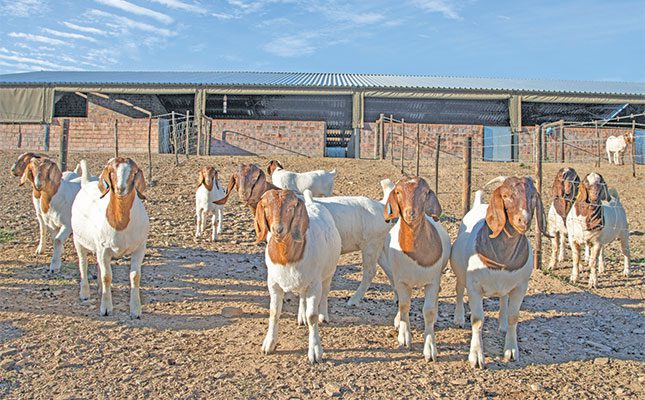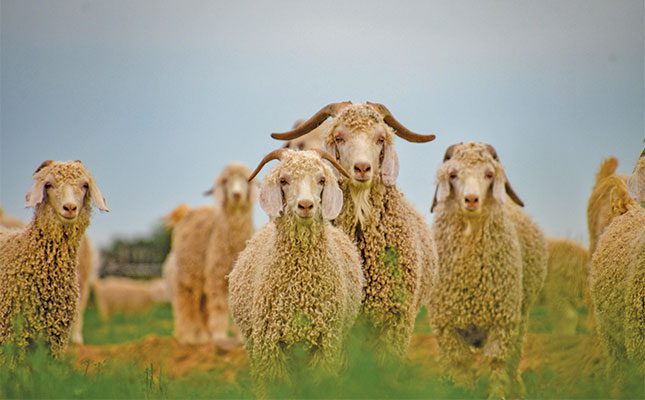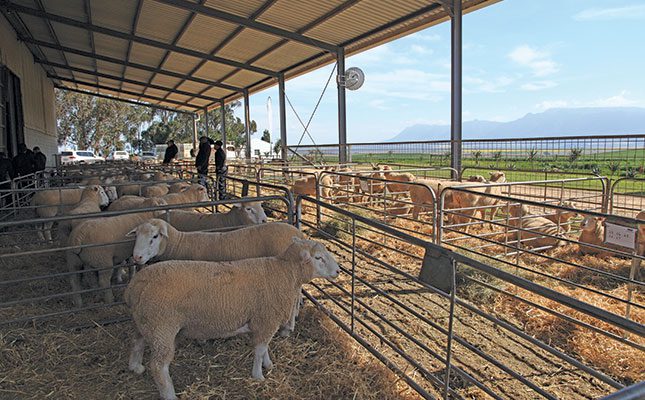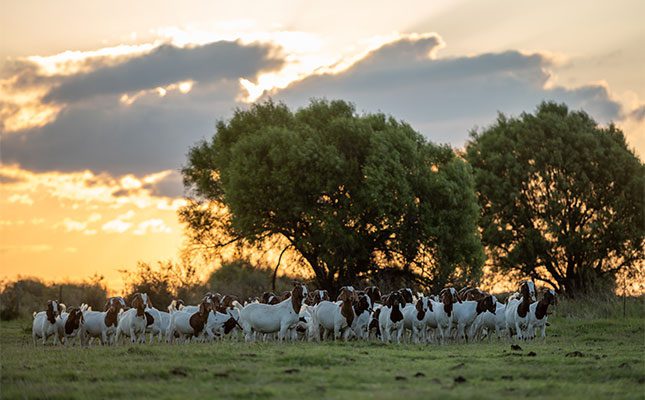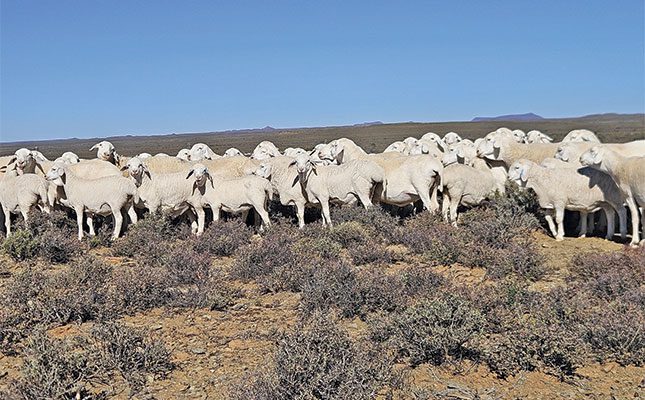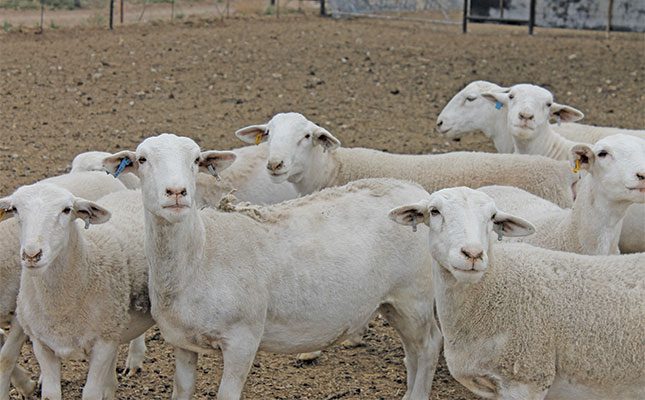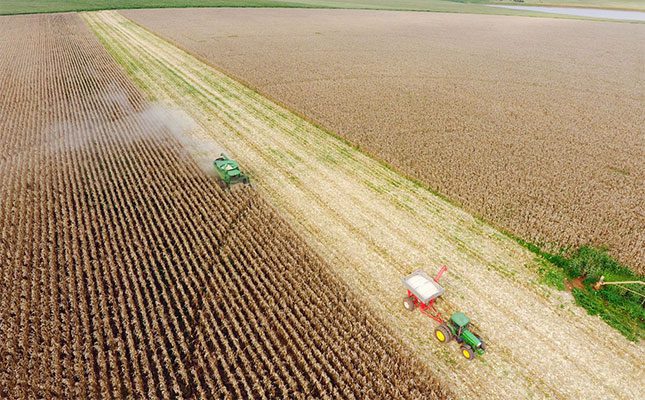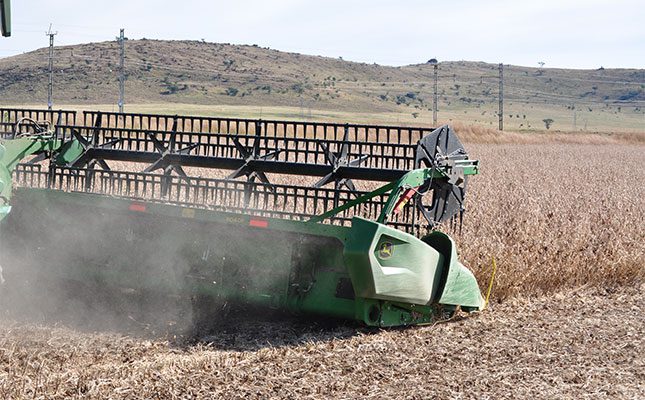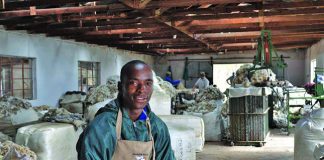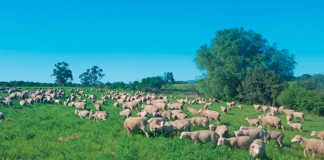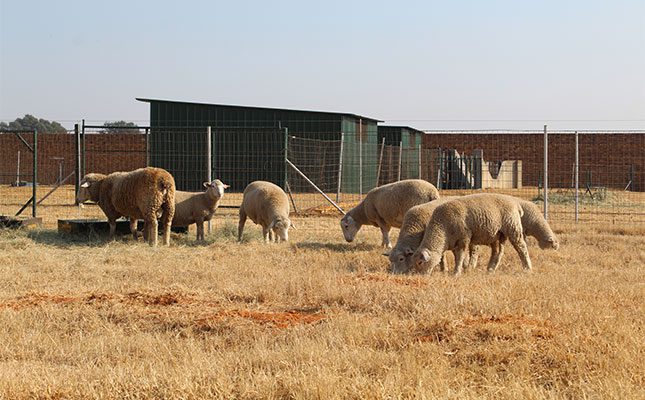
Photo: Labarie Dormers
These characteristics include early maturity, exceptional growth rate, high fertility, good mothering ability and milk production, an unlimited breeding cycle, and excellent adaptability.
As the Dormer can transfer these traits to other breeds, it is ideal for crossbreeding programmes.
“Although the Dormer produces fairly small lambs at birth, it can still transfer its conformational traits to late-maturing breeds. Its white wool, which is free of kemp and coloured fibres, makes it suitable for crossbreeding with the Merino for slaughter lamb production,” say Grobler and Eksteen.
“Both the champion and reserve champion at the National Slaughter Lamb competition in Moorreesburg [Western Cape] were sired by a Dormer ram, and this once more confirmed the popularity of the Dormer ram as crossbreeding sire.
“The champion lamb [Dormer x South African Mutton Merino], with a live mass of 40kg at three months, a carcass mass of 22,8kg, and a slaughter percentage of 57%, also displayed ideal conformation with good muscling and smooth fat distribution.”
Dormer lambs are relatively small at birth (around 4kg), but they are energetic and gain weight very quickly.
“To a large extent, the survival of lambs from birth to weaning influences the net reproduction performance of a breeding flock, and therefore the profit margin. As survival rate isn’t highly heritable, good management and care are important for achieving the highest possible weaning percentage.”
Wool production
While Dormers are generally bred for meat, Eksteen and Grobler explain that the breed’s wool production is a massive bonus.
“[The Dormer’s wool production] pays for expenses like shearing, inoculations, dosing, and other running costs. At 12 months, an average of 4kg to 5kg of wool per mature sheep is shorn, with a length of 10cm, a fibre diameter of 27 microns, and a clean yield of around 60%.”
As the breed’s wool is white and free of coloured fibres, Dormers can easily be crossbred with other white-woolled breeds.
“It’s also interesting to note that Dormer ewes generally do not lose their belly wool during lactation,” they say.
Feed conversion
Another Dormer trait that makes it ideal for crossbreeding is its adaptability and ability to excel under all conditions.
“The Dormer was initially bred for the intensive conditions of the winter rainfall region but has since been established in all areas of South Africa and thrives under extensive conditions. Dormers are calm, non-selective eaters and will not damage the veld unnecessarily.”
The Dormer converts low-quality roughage into high-quality meat, proving its efficiency in utilising roughage, say Eksteen and Grobler.
“Efficient feed conversion under intensive conditions makes the Dormer the ideal breed for economic slaughter lamb production, [even in crossbreeding programmes].”

